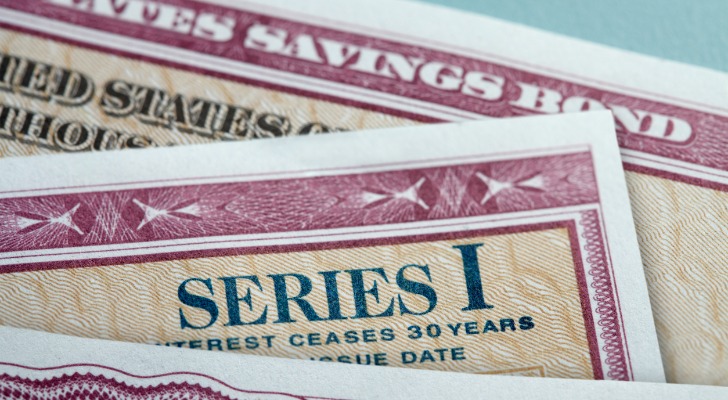Inflation has begun to cool, and that may translate to some assets.
The Treasury’s Series I Bonds, or “ I bonds,” are no longer the prized savings tool they were 12 months ago. As cost increases slowed over the past year as Federal Reserve raised interest rates, it was inevitable that this inflation-tied asset would also begin to cool.
A financial advisor can help you manage your investments and respond to economic shifts. Find a fiduciary advisor today.
As Bloomberg recently reported:
“Since the yield on Series I savings bonds dropped in May, investors have redeemed about $800 million worth of the securities, more than in all of 2021. That’s a big change from last year, when Americans piled into I bonds to shield their savings from inflation.”
Rates of redemption have soared since the start of 2023, as investors trade their I bonds for cash. At the same time, sales have plummeted from a high in October 2022. Last month, investors bought $1 worth of I bonds for every $20 they spent on the same asset at its height.
As the market loses interest in these securities, investors are pondering “What next?”
What Are Series I Bonds?
Series I Bonds are a form of treasury debt, like the ubiquitous five- and 30-year bonds that the government sells. They’re designed to protect investors from high inflation by pegging the asset’s yield to the government’s benchmark inflation rate. Each bond pays interest that’s based on a fixed rate and a variable one. The fixed rate is set at the time of the sale and remains the same for the lifetime of the asset, while the variable interest rate is based on the rate of inflation and is updated every six months.
For example, a new Series I bond is currently paying 4.30%. This is based on a 0.90% fixed rate and an adjusted inflation rate.
As with all variable products, the value of an I bond depends entirely on its environment. The I bond’s fixed interest rate tends to be far below other Treasury assets. For example, in August 2023, a 30-year Treasury bond is paying 3.625% compared to the I bond’s 0.90% fixed rate. In a low-inflation environment, this will reduce the value of the I bond. In a high-inflation environment, however, the value of an I bond can soar. At their recent high, these assets repaid investors at a coupon rate of more than 9%.
But that was when inflation itself had peaked at over 9%, pushing the combined rate of this asset to almost the historical annual return of the S&P 500 itself. Now, with inflation tracking back to the high side of normal, that yield has vanished.
What Should You Do With I Bonds Now?

All of this doesn’t mean I bonds are worthless. They will still generally maintain the value of your money against inflation.
I bonds come with some redemption stipulations. Once you have held this asset for 12 months, you can cash it in with the Treasury for the asset’s face value and its accrued interest. You might lose a few month’s of the bond’s interest, if you redeem it earlier than it’s full term, but you wouldn’t lose any of your principal.
This is a pretty significant advantage over other bonds. For example, if you hold a 30-year Treasury bond and want to get your money out, you’ll need to sell it on the market at large. If yields have begun to fall, you may not be able to recoup your initial investment and would need to accept a loss.
Focus on the Fixed Interest Rate
For long-term savers, though, there might still be plenty of reasons to hold on to your I bonds, or even buy more.
Yields in this asset have fallen with inflation, it’s true, but the fixed interest rate has actually ticked up slightly. That rate remains good for the life of the bond, and the Treasury updates both its fixed and variable rates every May 1 and November 1. So, all I bonds issued until Oct. 31, 2023, will pay 0.9% over inflation.
That fixed rate tends to increase as inflation decreases. An I bond bought in a lower-inflation environment can be particularly valuable if the inflation-adjusted value goes up. For potential buyers, you may be better off buying I bonds after the November 2023 adjustment, given the likelihood that inflation continues to fall.
Bottom Line
Together this all means that I bonds are a good way of holding onto cash for the long term. The redemption option means that you can take this money out of storage with relative ease. I bonds aren’t as accessible as savings accounts, but they are relatively liquid after the 12-month mark. The fixed-over-inflation formula means that any money you hold in this asset will preserve its value.
Investing Tips
- Having the right mix of stocks, bonds and cash for your risk tolerance is an important component of portfolio management. SmartAsset’s asset allocation calculator can help you determine how to spread your money across these three asset classes.
- A financial advisor can help you build a comprehensive investment portfolio. Finding a financial advisor doesn’t have to be hard. SmartAsset’s free tool matches you with up to three vetted financial advisors who serve your area, and you can have a free introductory call with your advisor matches to decide which one you feel is right for you. If you’re ready to find an advisor who can help you achieve your financial goals, get started now.
Photo credit: ©iStock.com/DNY59, ©iStock.com/ferrantraite
